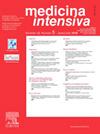Pulmonary Events in ICU patients with hyperoxia: is it possible to relate arterial partial pressure of oxygen to coded diseases? A retrospective analysis
IF 2.7
4区 医学
Q2 CRITICAL CARE MEDICINE
引用次数: 0
Abstract
Objective
Oxygen has been used liberally in ICUs for a long time to prevent hypoxia in ICU- patients. Current evidence suggests that paO2 >300 mmHg should be avoided, it remains uncertain whether an “optimal level” exists. We investigated how “mild” hyperoxia influences diseases and in-hospital mortality.
Design
This is a retrospective study.
Setting
112 mechanically ventilated ICU-patients were enrolled.
Patients or participants
112 ventilated patients were included and categorized into two groups based on the median paO2 values measured in initial 24 h of mechanical ventilation: normoxia group (paO2 ≤ 100 mmHg, n = 43) and hyperoxia group patients (paO2 > 100 mmHg, n = 69).
Interventions
No interventions were performed.
Main variables of interest
The primary outcome was the incidence of pulmonary events, the secondary outcomes included the incidence of other new organ dysfunctions and in-hospital mortality.
Results
The baseline characteristics, such as age, body mass index, lactate levels, and severity of disease scores, were similar in both groups. There were no statistically significant differences in the incidence of pulmonary events, infections, and new organ dysfunctions between the groups. 27 out of 69 patients (39.1%) in the “mild” hyperoxia group and 12 out of 43 patients (27.9%) in the normoxia group died during their ICU or hospital stay (p = 0.54). The mean APACHE Score was 29.4 (SD 7.9) in the normoxia group and 30.0 (SD 6.7) in the hyperoxia group (p = 0.62).
Conclusions
We found no differences in pulmonary events, other coded diseases, and in-hospital mortality between both groups. It remains still unclear what the "best oxygen regime" is for intensive care patients.
高氧重症监护病房患者的肺部事件:动脉血氧分压与编码疾病有关联吗?回顾性分析
目的长期以来,重症监护室一直大量使用氧气来防止重症监护室病人缺氧。目前的证据表明,应避免使用 paO2 >300 mmHg,但仍不确定是否存在 "最佳水平"。我们调查了 "轻度 "高氧对疾病和院内死亡率的影响。患者或参与者112名接受机械通气的ICU患者被纳入研究,并根据机械通气最初24小时内测得的paO2中位值分为两组:常氧组(paO2 ≤ 100 mmHg,n = 43)和高氧组患者(paO2 > 100 mmHg,n = 69)。结果两组患者的基线特征(如年龄、体重指数、乳酸水平和疾病严重程度评分)相似。两组患者的肺部事件、感染和新器官功能障碍的发生率差异无统计学意义。在重症监护室或住院期间,"轻度 "高氧组 69 名患者中有 27 人(39.1%)死亡,常氧组 43 名患者中有 12 人(27.9%)死亡(P = 0.54)。结论我们发现两组患者在肺部事件、其他编码疾病和院内死亡率方面没有差异。重症监护患者的 "最佳氧疗方案 "是什么仍不清楚。
本文章由计算机程序翻译,如有差异,请以英文原文为准。
求助全文
约1分钟内获得全文
求助全文
来源期刊

Medicina Intensiva
CRITICAL CARE MEDICINE-
CiteScore
2.70
自引率
20.00%
发文量
146
审稿时长
33 days
期刊介绍:
Medicina Intensiva is the journal of the Spanish Society of Intensive Care Medicine and Coronary Units (SEMICYUC) and of Pan American and Iberian Federation of Societies of Intensive and Critical Care Medicine. Medicina Intensiva has become the reference publication in Spanish in its field. The journal mainly publishes Original Articles, Reviews, Clinical Notes, Consensus Documents, Images, and other information relevant to the specialty. All works go through a rigorous selection process. The journal accepts submissions of articles in English and in Spanish languages. The journal follows the publication requirements of the International Committee of Medical Journal Editors (ICMJE) and the Committee on Publication Ethics (COPE).
 求助内容:
求助内容: 应助结果提醒方式:
应助结果提醒方式:


